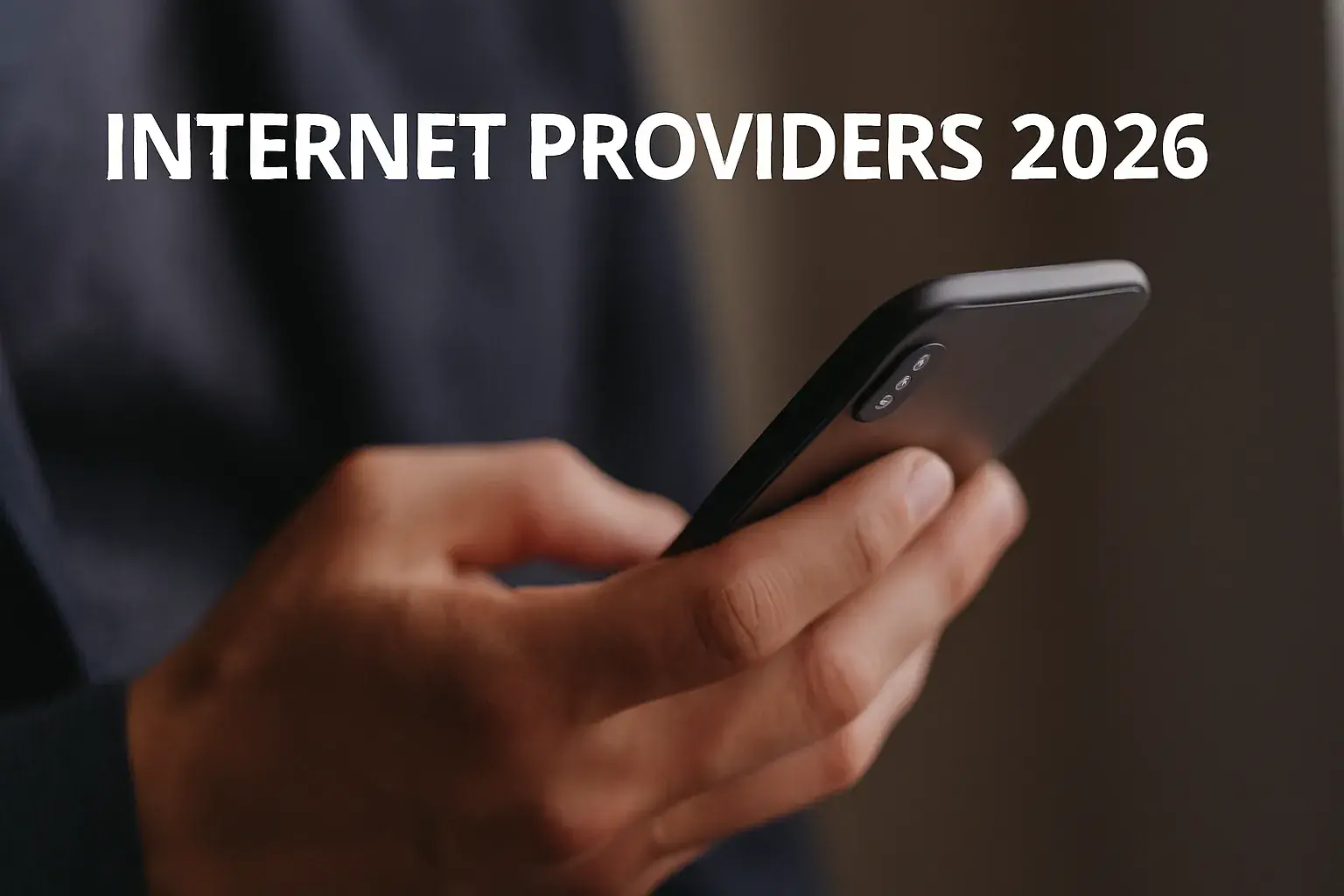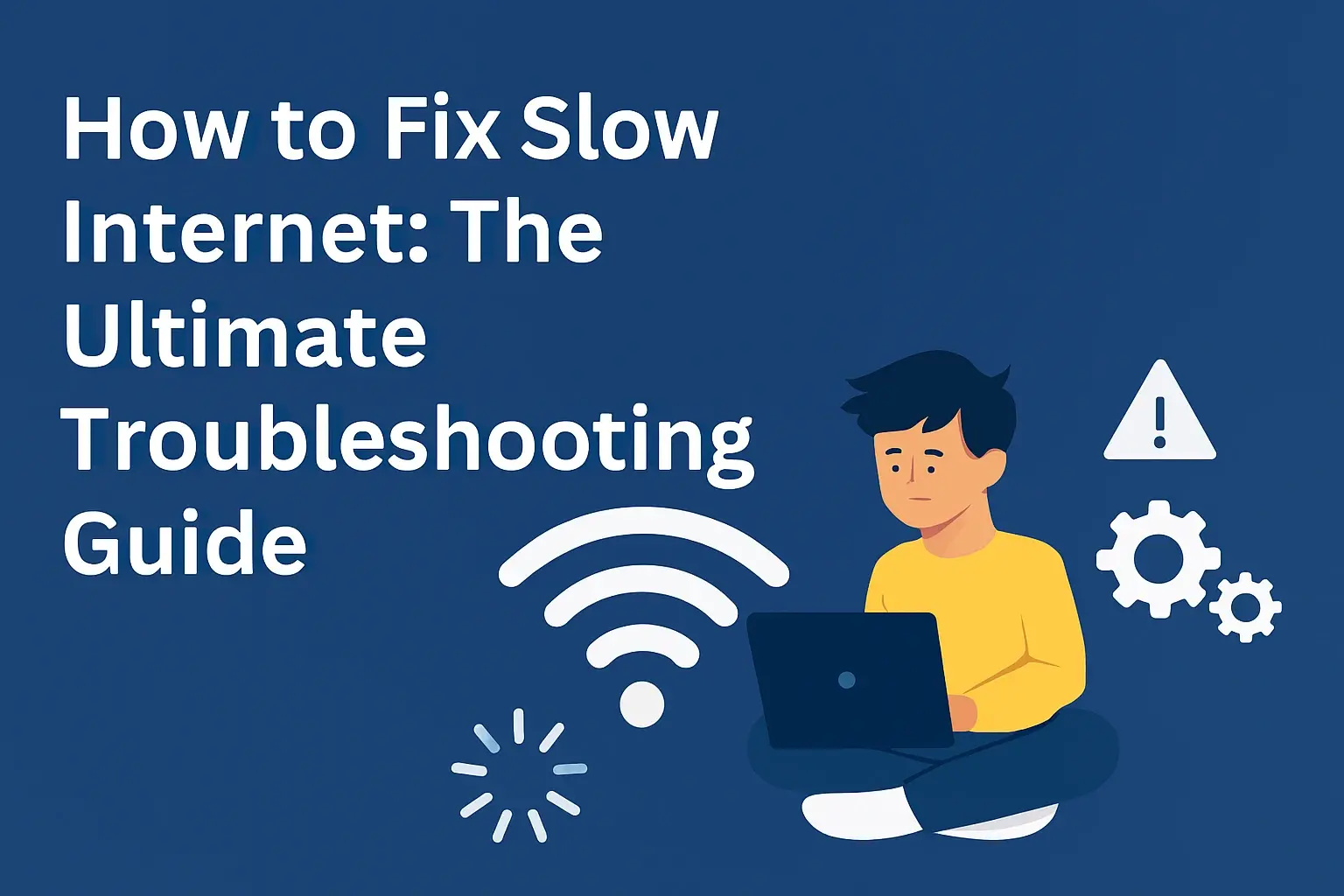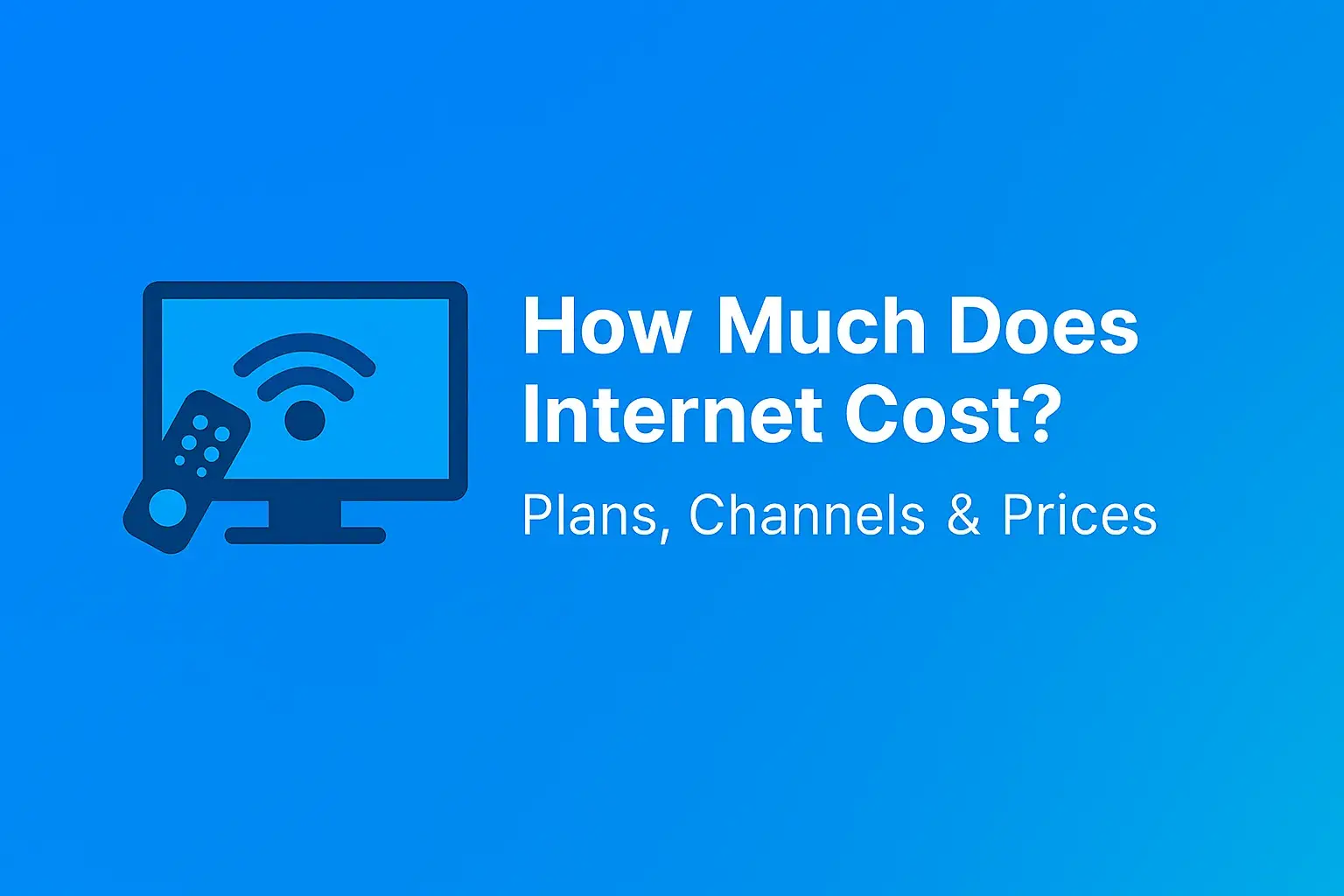Simplify Your Life: Switch Internet Providers Effortlessly

Tired of slow internet or high bills? Discover how to switch internet providers effortlessly in 2025. Our comprehensive guide reveals expert tips, comparison tools, and step-by-step instructions to save you time and money. Get faster speeds and better value today! In our increasingly connected world, reliable and fast internet isn't a luxury; it's a necessity. Yet, many of us are stuck with outdated plans, slow speeds, or exorbitant monthly bills. If you've ever found yourself frustrated by buffering videos, lagging video calls, or surprise charges, it's time to explore your options. Switching internet providers in 2025 can be a surprisingly simple process that leads to significant improvements in your online experience and your budget. The landscape of internet service is constantly evolving. New technologies emerge, providers expand their coverage, and competitive pricing becomes more prevalent. Staying with your current provider out of inertia or fear of hassle means you might be missing out on: Don't let the perceived complexity deter you. With the right approach, simplifying your digital life by switching internet providers is more achievable than ever in 2025. A little preparation goes a long way to ensure your internet provider switch is as smooth as possible. Rushing into a decision without understanding your needs or the market can lead to disappointment. Here’s what you need to do: Understanding how you use the internet is the first step to finding a plan that truly fits. Ask yourself: Key Insight: For most households in 2025, a minimum of 100 Mbps download speed is recommended for basic use, with 300-500 Mbps or higher being ideal for heavy streaming, gaming, and multiple users. Before terminating your current service, carefully review your existing contract. Check for: Tip: Many providers offer new customer deals that can offset ETF costs. Always ask potential new providers if they have an ETF reimbursement program. Have your current account number, service address, and billing details readily available. This information is often required when setting up new service or discussing cancellation with your current provider. With your needs identified and current contract understood, it's time to explore the market. This phase is crucial for ensuring you get the best value and performance. Not all providers offer service everywhere. The first and most critical step is to determine which companies service your specific address. You can usually do this directly on provider websites or through third-party comparison sites. Action: Visit the websites of major national providers (e.g., Verizon, AT&T, Spectrum, Xfinity) and any prominent regional or local providers. Enter your ZIP code or full address. The type of internet technology available significantly impacts speed, reliability, and price. In 2025, the primary options include: Tip: Prioritize fiber if available. If not, cable is generally the next best option for most users. Once you know which providers and technologies are available, dive into their specific plans. Pay close attention to: Don't just rely on marketing. Search for independent reviews of providers in your area. Look for feedback on: Websites like the Better Business Bureau (BBB), consumer review sites, and local community forums can be valuable resources. Manually comparing dozens of plans can be time-consuming. Fortunately, 2025 offers sophisticated online comparison tools that can streamline the process and help you identify the best deals effortlessly. These platforms aggregate data from various internet service providers (ISPs) based on your location. By entering your address, they can instantly show you: While specific tools may evolve, look for reputable aggregators that: Example: A user in a suburban area might use a tool to find that while Xfinity offers high download speeds, AT&T Fiber provides symmetrical speeds at a comparable price point after promotional periods, making it a better choice for heavy video conferencing. The tool would highlight these differences clearly. The technology powering your internet connection dictates its performance. Knowing the differences empowers you to make an informed choice. Fiber optic internet uses strands of glass or plastic to transmit data as light signals. This technology offers unparalleled speed and reliability. Cable internet uses the same coaxial cables that deliver cable TV. It's widely available and offers competitive download speeds. DSL uses existing copper telephone lines to deliver internet. Speeds depend heavily on your distance from the provider's central office. Leveraging cellular 5G networks, this option provides internet wirelessly to a dedicated router in your home. Now that you've done your research, it's time to execute the switch. Follow these steps to make the process as smooth as possible. Based on your research, select the provider and plan that best meets your needs and budget. Have the plan details, pricing, and any promotional offers clearly documented. You can usually sign up online or by phone. Be prepared to provide: Confirmation: Ensure you receive a confirmation email or document outlining your new service details, installation appointment, and costs. The new provider will schedule an installation appointment. This typically involves a technician visiting your home to set up the necessary equipment (modem/router) and connect you to their network. Be present for the entire appointment. Once the installation is complete, the technician should help you test the connection. Perform your own speed tests and try accessing websites or streaming content to confirm everything is working as expected. Crucially, do NOT cancel your old service until your new service is fully installed and confirmed to be working. Contact your old provider to cancel. Be polite but firm. Ask for confirmation of cancellation and any final billing details. If you're due an ETF reimbursement, ensure you understand the process for claiming it. Example: If your installation is scheduled for Tuesday, call your old provider on Wednesday to cancel. This buffer ensures you don't lose internet access unexpectedly. While the process is designed to be straightforward, a few common issues can arise. Being aware of them can help you avoid frustration. Problem: The advertised price is only for a limited time, and then it jumps significantly. Hidden fees for equipment, installation, or taxes can also inflate the bill. Solution: Always ask for the "out-of-contract" price and a full breakdown of all potential fees. Get this in writing. Problem: Technicians may be late, reschedule, or not show up at all, leaving you without internet for longer than anticipated. Solution: Confirm appointment details a day before. If a technician is late, call the provider. Document any missed appointments. Problem: The actual speeds you experience are much lower than advertised. Solution: Run speed tests at different times of day using a wired connection. If consistently low, contact customer support immediately. Understand that advertised speeds are "up to" and can vary. Problem: You switch before your contract ends and incur a hefty ETF. Solution: Factor the ETF into your total cost. Negotiate with the new provider for ETF reimbursement. If you can wait until your contract expires, do so. Problem: You discover your desired provider or technology isn't available after extensive research. Solution: Thoroughly check availability at the very beginning of your search. Consider alternative technologies or providers. You've successfully switched! Before you fully settle in, a few final steps ensure your transition is complete and you're maximizing your new service. If you're using the provider's modem/router combo, ensure it's placed in a central location for optimal Wi-Fi coverage. If you use your own router, connect it according to the manufacturer's instructions. Change the default Wi-Fi network name (SSID) and password to something unique and strong. Enable WPA3 encryption if available for the best security. Carefully review your first one or two bills from the new provider. Ensure they match the pricing and terms you agreed upon. Contact them immediately if you find any discrepancies. If you were renting equipment from your old provider, ensure you return it promptly according to their instructions to avoid additional charges. Keep the return receipt as proof. Familiarize yourself with your new provider's online account portal. This is where you'll manage your billing, check usage (if applicable), and access support resources. The Takeaway: Switching internet providers in 2025 is a powerful way to upgrade your digital life. By following a structured approach, utilizing available tools, and being prepared for common issues, you can achieve a faster, more reliable, and more affordable internet connection with minimal stress.Why Consider Switching Internet Providers in 2025? The Digital Upgrade You Deserve
Before You Switch: Essential Prep Work for a Seamless Transition
1. Assess Your Current Internet Usage and Needs
2. Understand Your Contractual Obligations
3. Gather Your Account Information
Finding Your Perfect Internet Provider: A Step-by-Step Guide to Effortless Selection
Step 1: Check Availability in Your Area
Step 2: Compare Available Internet Technologies
Step 3: Evaluate Plans and Pricing
Step 4: Read Reviews and Check Provider Reputation
Leveraging 2025 Comparison Tools for Smart Choices
How Comparison Tools Work
Top Comparison Tools for 2025 (Examples)
Understanding Today's Internet Technologies (2025 Edition)
Fiber Optic: The Future is Now
Cable Internet: The Workhorse
DSL (Digital Subscriber Line): The Reliable Standard
5G Home Internet: The Wireless Challenger
The Effortless Switch: Your Step-by-Step Action Plan for 2025
Step 1: Choose Your New Provider and Plan
Step 2: Contact the New Provider to Sign Up
Step 3: Schedule Installation
Step 4: Prepare for Installation Day
Step 5: Test Your New Service
Step 6: Cancel Your Old Service
Navigating Potential Pitfalls and Common Mistakes to Avoid
1. Unexpected Fees and Price Hikes
2. Installation Delays or No-Shows
3. Speed Not Meeting Expectations
4. Early Termination Fees (ETFs)
5. Service Not Available at Your Address
Making the Leap: Final Checks and Moving Forward with Confidence
1. Optimize Your Home Network
2. Set Up Your Wi-Fi Network Securely
3. Monitor Your First Few Bills
4. Consider Your Old Equipment
5. Explore Your New Provider's Portal
Faq
Q1: How long does it typically take to switch internet providers?
The entire process, from signing up with a new provider to having their service fully operational and your old service canceled, usually takes anywhere from a few days to two weeks. The longest part is often scheduling the installation appointment with the new provider, which can range from 2 days to 10 days depending on demand and technician availability.
Q2: Can I keep my current internet equipment (modem/router) when switching?
In many cases, yes, but it depends on the new provider and the technology they use. If you're switching to a similar technology (e.g., cable to cable), your existing modem might be compatible, potentially saving you rental fees. However, if you're switching to a different technology (e.g., DSL to fiber), you will almost certainly need new equipment provided by the new ISP. Always confirm compatibility with the new provider before the switch.
Q3: What happens if my new internet service isn't installed on the scheduled date?
If your installation is delayed or the technician misses the appointment, contact your new provider immediately. Inquire about rescheduling and ask if there are any service credits or compensation available for the inconvenience. Document the missed appointment and any promises made.
Q4: How do I ensure I'm getting the best possible deal in 2025?
The best way to secure a great deal is to actively compare offers. Utilize online comparison tools, check provider websites directly for exclusive web-only deals, and don't hesitate to negotiate with sales representatives. Always ask about introductory pricing, contract lengths, and the price after the promotional period ends. Bundling services can also sometimes lead to savings.
Q5: What if I'm moving to a new address and need to set up internet?
When moving, research available providers at your new address well in advance. Contact potential providers to check availability and schedule installation for shortly after you move in. This minimizes downtime. You'll still need to cancel your old service at your previous address. Some providers offer moving specials.
Q6: My current provider offers much higher speeds than I need. Can I downgrade my plan when switching?
Absolutely. This is a common reason to switch! When researching new providers, focus on plans that match your actual usage needs, not just the highest speeds available. This can lead to significant cost savings. Make sure the new plan still offers enough bandwidth for your household's activities.





